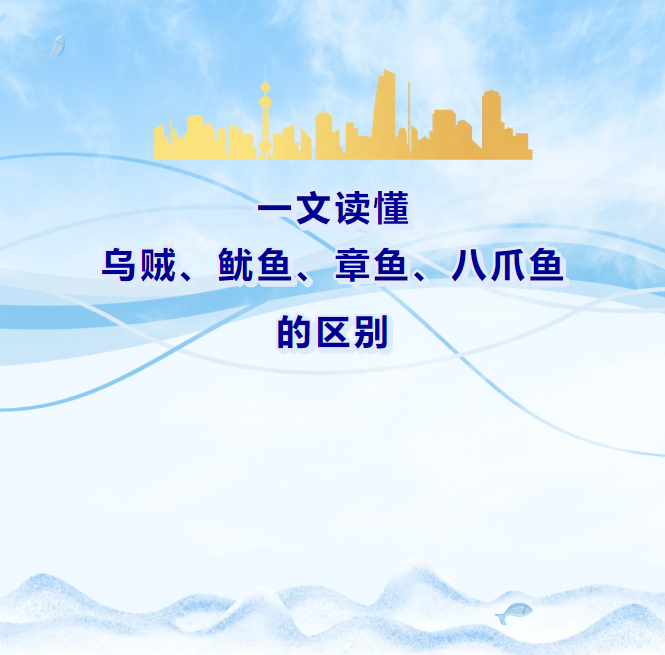

"Introduction
Octopus, cuttlefish, squid and octopus are all creatures that we are familiar with, but many friends are a little confused about the distinction between these creatures, and some people even think that these four names are all the same creature. So, today we will talk about the difference between octopus, cuttlefish, squid and octopus from a scientific point of view.
Octopus, squid and cuttlefish are all classified under the phylum Mollusca-Cephalopoda. What is a mollusk? As the name suggests, it is an animal with a soft body and a true body cavity. What is a cephalopod? It is a creature with feet on its head, which is also called a tentacle. The octopus has exactly 8 tentacles, so it is also called an octopus. Therefore, this question becomes the difference between the three creatures of octopus, cuttlefish and squid."


When it comes to octopus (Latin name: Octopus), what do you think of first, the prediction emperor "Octopus Brother Paul" in the South Africa World Cup, or the octopus balls at the roadside stall?
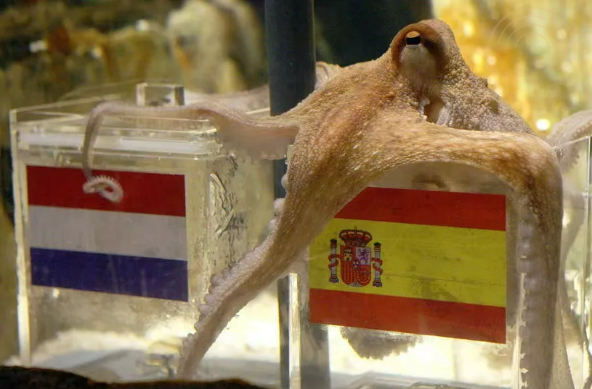
The reason why we talk about octopus first is that it is completely different from cuttlefish and squid, and it is also the easiest to distinguish. You only need to count the tentacles. Octopus has 8 tentacles, and cuttlefish or squid has 10 tentacles. From the biological classification point of view, octopus has 8 tentacles, so it is the general name of all animals under the order Octopoda, while cuttlefish and squid are animals under the order Decapoda.
Octopus is mainly distributed in tropical and temperate oceans. It is a benthic animal, usually hiding in rock cracks or empty shells of some marine organisms. Each of its tentacles has 1-2 rows of suckers, which are its hunting weapons. When encountering prey, octopus will use its tentacles to firmly control the prey, and then use its snout (there is a pair of sharp keratin palates and rasp-like radula in the mouth) to nibble the prey one bite at a time, and when encountering natural enemies, it will also rely on its own large number of pigment cells to use inkjet to save itself.
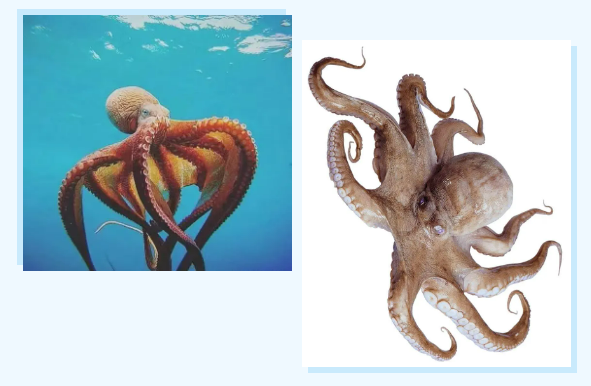

Cuttlefish (Latin name: Sepiida) is what we call cuttlefish and cuttlefish in daily life. The "black" and "ink" reflect its characteristics of spraying ink to cover when escaping from attacks. There is an ink sac in the body of the cuttlefish. In an emergency, the cuttlefish will spray a lot of ink to muddy the sea water and escape. As for the word "thief", it is really unfair. In fact, the ancients originally called it "black fish", and it became "squid" after being passed around.
In the entire cephalopod class, cuttlefish and squid are the easiest to confuse. In a broad sense, cuttlefish is the general name for all animals under the order Decapoda of the cephalopod class, while squid is the general name for all animals under the suborder Oculata of the order Decapoda. In this way, squid is a kind of cuttlefish. In a narrow sense, cuttlefish is the general name for all animals under the order Sepia of the order Decapoda, while squid is still the general name for all animals under the suborder Oculata of the order Decapoda. So in a narrow sense, the two animals belong to different orders and are two completely different categories of animals.
Compared with other cephalopods, the squid is shorter and fatter, with 10 arms (8 short arms + 2 long arms), the whole body is relatively flat, the arms are relatively short, and there is a relatively large fin on each side of the ketone. Among its 10 arms, the fourth pair of arms is obviously longer than the other arms, and this pair of arms can be freely contracted. In addition, the eight short arms of the squid have suction cups of different sizes, while the two long arms only have a small number of suction cups on the inner side of the front end. From the perspective of body structure, the squid has bones in its body, which is an oval calcareous inner shell. This inner shell is large and thick, with many gaps inside, which plays a role in supporting the body.
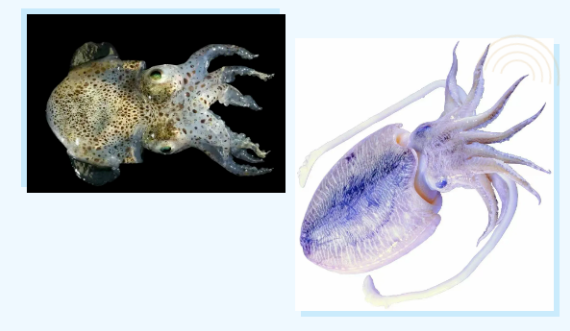

Squid (Latin name: Loligo), also known as squid, is a general term for all animals under the suborder Occipital, Cephalopoda, Scicapidae, and Scicapidae. Although it also has 10 arms, and 8 of them are long and 2 are short, its arms are more slender than those of squid, and the whole body of squid is much more slender than that of squid, and is long and conical. In addition, since there is also an inner shell in the body, it is much thinner than the inner shell of squid and is almost transparent. Squid is a species under the suborder Occipital, so there is no covering on its eyes. Compared with other cephalopods, other cephalopods have a protective film on their eyes, but it does not. In addition, although the ketone of squid also has fins, they are only on both sides of the end, while the ketone of squid has fins on both sides and the end.
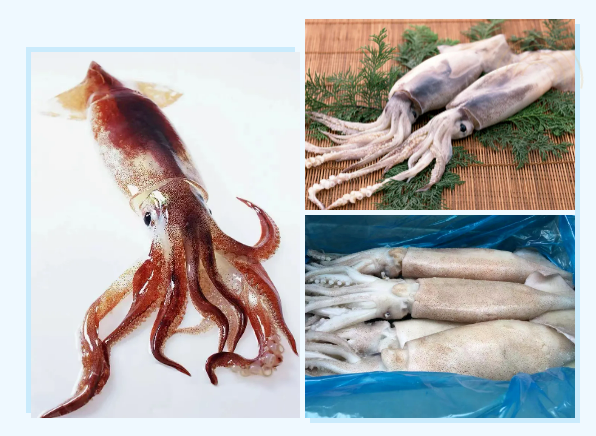

Customs Tips:
1. Announcement of the list of access to import and export aquatic products. The General Administration of Customs evaluates and reviews the food safety management system and food safety status of countries (regions) that export aquatic products to my country, and publishes the "List of Aquatic Products Exported to China from Countries or Regions that Meet the Evaluation and Review Requirements". Only aquatic products with controllable risks in this access catalog are allowed to be imported. It should be noted that due to the different storage methods of imported aquatic products, they are divided into two methods: fresh and frozen, and the access conditions involved will also be different.
2. Registration of import and export enterprises. According to regulations, domestic importers of imported food shall register with the customs of their place of residence, and foreign exporters or agents shall register with the General Administration of Customs. Foreign aquatic product manufacturers need to be reviewed and inspected by the competent authorities of the country (region) where they are located, and the competent authorities of the country (region) where they are located shall recommend them to the General Administration of Customs for registration. The General Administration of Customs uniformly publishes the list of registered foreign manufacturers of imported food.
3. Requirements for accompanying certificates and labeling. All aquatic products exported to China must be accompanied by official foreign inspection and quarantine certificates. The goods label should indicate the necessary information such as the trade name and scientific name, specifications, production date, batch number, shelf life, storage conditions, production method, production area (state/province/city), production company name and registration number, and destination (marked as the People's Republic of China). The "Inbound Goods Inspection and Quarantine Certificate" is a safety traceability clue for imported aquatic products. It can be traced back to foreign farms or clearly identify fishing areas and breeding methods. When consumers purchase imported aquatic products, they can ask the seller for it to trace the purchase information and identify regular imported aquatic products through packaging labels.
Article source:
https://mp.weixin.qq.com/s/YJLo3Z6jUWiNxqdnGC9SdQ
OUR MISSION
Provide high-quality services and products
/ Hotline /
021-34505035(上海)
/ Business consultation /
Li Cheng 13661660483
Zhou Cheng 18621585930
/ Official website /
https://www.rsftrading.com/

COMPANY TEL
021-3450-5035
E-MAIL
917935736@qq.com
COMPANY ADDRESS
Room 403, No. 5, Lane 72, Haowen Road, Minhang District, Shanghai
All Rights Reserved © Copyright 2021 Shanghai Rishifu Trading Co., Ltd.
Website:OCEAN